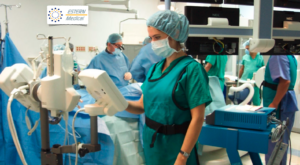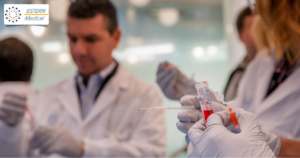Research Article by: Dr. Jorge Estrella MD, President & CMO and Claudia Hernandez, BS.
Head Director Clinical Operations US North America & Latin America at ESTERN Medical CRO
Life Sciences.
In the past 15 months, since the World Health Organization declared Covid-19 as a pandemic, healthcare systems around the globe have been under immense clinical trials R&D and regulatory pressure.
Today, despite the rapid roll out of several highly effective vaccines, the disruption of the pandemic continues to grow.
The challenges for Biotech’s, Pharma & Medical Device companies has been about finding a balance between enabling freedoms to allow clinical trials & life sciences R&D to return to normal, particularly in potential novel new treatments into medical and university institutions.
For most, that balance has been near impossible to find and therefore choosing your right Clinical Research Organization (CRO) is important to bond as partners in your quest for R&D success in your present and future clinical trials.
As of 2020, there were over ~1,100 CROs in the world, despite continued trends toward consolidation. Many CROs have been acquired while others have gone out of business.
When it’s time to evaluate CROs for your Clinical Trial Study, your first choice is typically to determine what type of Clinical Research Organization (CRO) you are going to evaluate:
- One of the many extensive global CROs that dominate the top-end of the R&D market.
- Or a broad number of Mid / Small International R&D CROs
There are many benefits and diverse detractions to both. In some situations, the large CRO might be your choice. In other situations, it might cause nothing but frustrations, expensive contractual service cost overruns, most common constant missed regulatory or clinical timelines and lack of communications and relationship.
Below are some recommendations on when it’s best to go with the larger CRO, and when it’s best to go with the “Mid and Small CRO” for your local geographic region or international study.
Does a large CRO might be best for you:
If you have a global clinical trials in multiple continents.
Large CRO’s have a more global reach capability and can often ramp up a global trial more rapidly.
But most “Mid and Small CRO’s” will be more complex to ramp a global clinical trial as they are focus on key strategic International geographic areas of expertise that they will focus of all effort its centralized to top-quality, cost and resolving all sponsor services promptly and objectively.
Therefore, a large global phase III trial may be best suited for the large CRO for Big Pharma and a Phase III trial may be best for and “International” Mid -Small CRO that could provide you more objective R&D targeted solutions without compromising the data quality of your project.
If you are looking for a strategic partner who will take part of equity participation in your R&D clinical project:
Most large CROs have been getting larger over the past few years. This has led them to move beyond transactional services and create intricate complex deals with large pharmaceutical & medical device companies, getting board or advisory seats at R&D head decision-making management and equity participation for the CRO selected pipeline.
If you are looking for a multi-year R&D contract with a single provider for multiple or diverse project clinical studies:
Big Pharma & Medical Device sponsors are realizing that they can get more value from outsourcing by creating longer-term relationship agreements, often over multiple target therapeutic areas, with single providers, to create and focus on a business relationship with a single provider between 5 and 10 years.
If your clinical requires a broad number of Project Managers (PM’s) and Clinical Research Associates (CRA’s) quickly to jump into your project.
A broad common misconception is that large CROs have a large volume of people on the bench available to work on the next big R&D trial assigned that comes into the door of the CRO when awarded the project.
This is rarely true – having people on the bench hurts any financial company margins. Most CROs operate at a very similar margins, so the large CROs must go out and staff up for a big trial just like the Mid or Small size CROs. But the scale and reach of the large CRO makes this easier for them as most of them have capital and a broad staff of HR department to accelerate process.
A Mid & Small size CRO might be best for you:
If you need the undivided full attention of your CRO.
If you’re a small to midsize Biotech, Pharma or Medical Device company or sponsor, or just starting with your R&D clinical trial program, you may wish to have the undivided attention of your CRO in a partner-like business model relationship a Life Sciences customer service oriented model.
Larger global CROs get excited about large clinical studies and Big pharma drug & medical device companies development deals, which sometimes causes smaller trials and smaller & mid R&D companies to get lost in the constant shuffle of not putting the attention they deserve. It can be demoralized to watch your project timelines and trial budgets continually growing without receiving any type of explanation from your CRO. While large CROs may present you with an “A” team in the bid defense meetings, as a smaller sponsor company with a relatively small trial you may get a “C” team with very little experience; But at Mid & Smaller CROs you often get an experienced & more senior “A” project and management team that sees your clinical trial through from site selection to delivery of final trial results.
Want an experience from all levels of your R&D project working teams:
Mid & Small CROs often have a much lower amount of project turnover than large CROs and can often identify the exact people to work on your trial. All clinical trials are complex, and there’s no substitute for lack of knowledge. Mid – Small CROs hired senior and experience & track record at all levels of management. Your large CRO might have tremendous global experience as a company, but the CRAs or the PMs managing your trial may not have that experience. Check the overall experience & life science credentials of the project team assigned to your trial to make sure they have the experience you desire for your company project success.
Project costs of a Big CRO Vs Mid-Small CRO:
Did you choose the larger CRO because their initial bid financial costs were lower than the Mid -Small CRO’s costs bid? This is very common, but the change work orders that will most common and inevitably come later will drive your cost up to a level usually much more than the Mid-Small CROs. Verify that all the R&D project assumptions are correctly adequately used for your trial project and that all financial project BD bids are adequate for your trial. Most important check the CRO’s policy on change orders before signing your LOI, MSA, WO regardless of what size CRO you’re working with.
Can you afford to extended your project clinical trial timelines.
The turnover at CROs is high, and it’s very common for larger CROs to change your project manager mid-trial project. This can and will extend your timelines as the new PM gets proper training and learning curve to be up to speed on your clinical trial (possibly this costs will be on your company project expenses). The constant changing of CRA’s, and PM’s can lead to overall frustrations at the site level as well for any Sponsor.
Want to learn who is working on your clinical trial.
Larger CROs can mobilize a project team very quickly, but do you want to know and learn who the newer project team members are? The ones who start your trial aren’t always the ones who deliver the final clinical trial results. If you desire to have the same people working on your clinical trial from start to finish, choose a Mid-Small CRO (and confirm who will be working on your trial in the lifespan of your study project). So, you might get a full picture quality of your R&D and project support.
Executing a Phase I, II and phase III:
Smaller trials can be time-consuming just like larger trials, but they’re less financially profitable to the CROs. Phase I trials have different challenges than other phases, due to site selection, patient cohort management and smaller patient size. Mid and Smaller CROs might be better suited to handle the distinction of these complex, lower profit trials.
As an International CRO, we have seen every type of project situation discussed above in the clinical trial ranging from all trial phase and development target indications for the US & Latin American marketplace over the past 20 years. Having that big CRO name attached to your phase II & III trial for your pharmaceutical or medical device development may sound extremely comforting for your senior management and company board, but the challenges that you could encounter might far outweigh the “name” benefits. We recommend that you take an objective look at your project R&D situation, the realities of the CRO International marketplace, and what’s most important to your company during your clinical study success.
Connect with us to learn more about how we might support your clinical studies in the US North America or Latin America.






